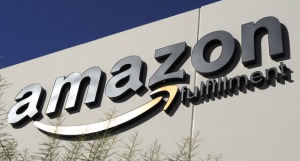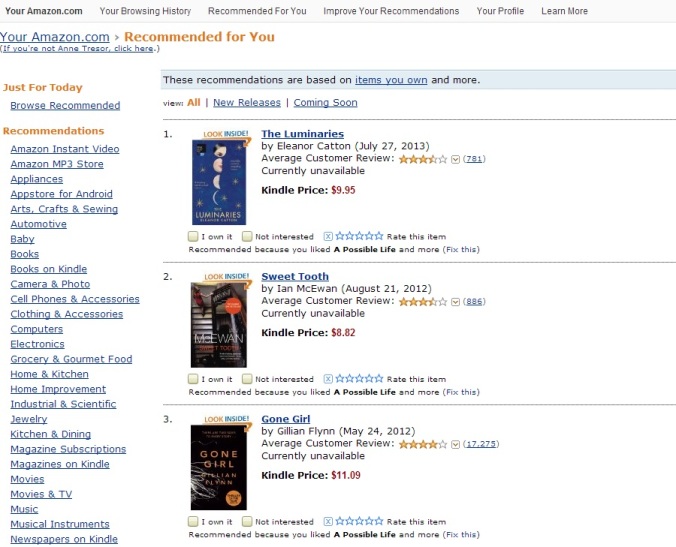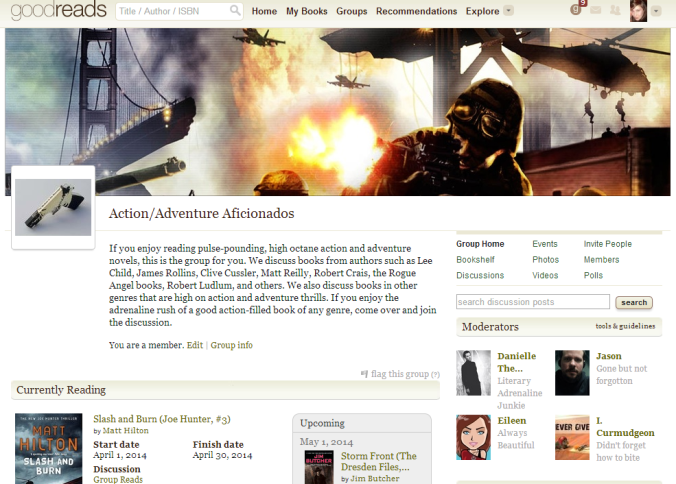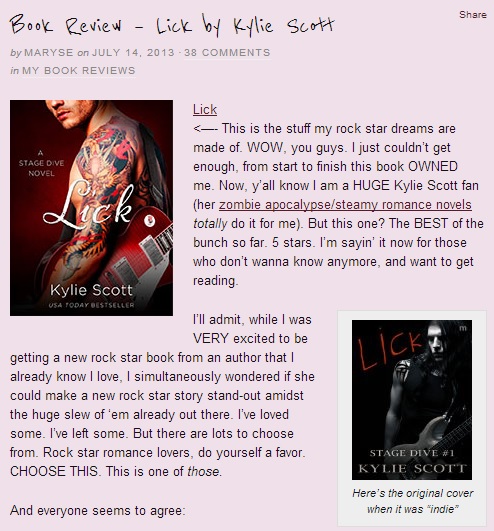5. Buy Nothing groups on Facebook
Hyper-local and environmentally superior, these groups foster a sense of community and a healthy sense of smugness. They do this by encouraging members to give freely of the material goods they don’t need, and taking same off the hands of other like-minded souls. Referred to as ‘gifting’, there is a whole multi-layered ethos around the practice: ‘fast-gifting’ refers to first-come first-served, take-it-off-my-hands-asap posts, while ‘slow-gifting’ means that the giver will consider a range of members who comment on the post and thoughtfully give it to whoever they deem most worthy. Or they could pick a number out of a hat. Regardless, it means that less stuff is thrown out or hoarded, and more is recycled.
What’s at stake in the Amazon versus Hachette dispute
While some call Amazon “the best thing to happen to storytellers since the invention of movable type”, the big book publishers see the online retailer as more of an immovable object.
Amazon have reportedly been playing dirty in their negotiations with publishers about contract terms. The latest episode involves one of the world’s largest publishers Hachette, who has been in talks with Amazon since January about the terms of their ebook sales contract.
There are reports of Amazon removing retailer discounts and pre-order buttons on Hachette titles, slowing delivery times on Hachette print books, and appealing directly to Hachette authors have been the talk of the publishing world. One of the major sticking points appears to be Amazon’s insistence on having the authorisation to print copies of Hachette books via print-on-demand facilities at Amazon warehouses if they are out of stock.
But the main disagreement is about ebook pricing. Publishers are attempting to keep ebook retail prices at a level comparable to print books pricing, whereas Amazon wants lower priced ebooks in order to sell higher quantities.
Amazon says that “Many e-books are being released at $14.99 and even $19.99. That is unjustifiably high for an e-book. With an e-book, there’s no printing, no over-printing, no need to forecast, no returns, no lost sales due to out-of-stock, no warehousing costs, no transportation costs, and there is no secondary market — e-books cannot be resold as used books. E-books can be and should be less expensive.”
Publishers often make the argument that the cost of producing ebooks is exactly the same as producing a print book, up to the point of distribution. Yet the costs and risks of producing stock is a minor factor in the face of the intrinsic cultural value of books, no matter the format.
What publishers are really trying to preserve is their relevance and capacity as cultural gatekeepers. This is a valuable societal contribution, no matter how you regard the most recent torrent of technology-enabled self-publishing.
Read on at SBS where they’ve allowed me to opine on publishing feelings at length.
Digital Masterclass at the 2014 Emerging Writers’ Festival
Vertical Marketing, Online Presence, and Dino-Erotica
Featuring Nathan Farrugia, author of The Chimera Vector & Anne Treasure, The Civic Group
Writing isn’t what it once was, with writers expected to move faster than ever before, needing to keep up with bandwidth speeds and with brand new skills. The role of ebooks, social media, websites and more will be explored in this new masterclass to show you how to best launch your work into this brave new world of words.
The digital space allows publishers to identify niche audiences and target work to established communities of readers. How can writers engage with these groups in genuine, non-spammy ways? How important is a great author website to a writer’s online presence? Join Anne Treasure, recent survivor of the publishing industry, for a discussion with genre fiction author Nathan Farrugia (The Chimera Vector), as they work their way through a brave new world of ‘molecular specialisation’, metadata obsession, fan fic, and bestselling self-published dinosaur erotica.
We’re post-digital: the Kindle, which sparked the avalanche of digital reading, was first released in 2007. It’s been 7 years since digital reading and publishing went mainstream.
People used to refer to ebooks, but that feels clunky now – we just call them books, and it’s how you interact with the books that is defined – reading in digital or reading in print.
Readers now place a premium on convenience. All publishers should be focused on making books available when and where readers want them – with global availability, low cost and free of constraints.
But the big traditional publishers operate like ocean liners, and their course is set years ahead – they take a while to turn. Although, if Tor can do it…
There are huge opportunities now for individual authors and start-ups to establish a presence by doing things more effectively, using reader-led decision making.
Infrastructure is important: making sure that the right infrastructure is there is more than half the battle for publishers – this can mean establishing platforms and communities and setting up all the framework required for readers to serendipitously find a book.
But most often it should mean publishers identifying segments of the market that already have this framework and then accommodating them.
Genre in the Digital Age – YouTube
Marketing a Digital Publishing Imprint
Notes from a seminar I gave RMIT postgrad publishing students on 10 April 2014.
COMM2309: Publishing Sales and Finance, Marketing a digital-only imprint
Momentum
– 2011, Tom Gilliatt (then non-fiction publisher at Pan Mac) and Joel Naoum (then editor) started thinking about an experimental, digital-only imprint run as a start-up
– Had to be separate from Pan Mac in order to be as forward thinking as possible – not governed by the establishment publishing house
– We did everything that a traditional publisher is wary of doing (because of various reasons – trying not to offend stakeholders, protecting IP)
o globally-available
o low-cost
o reader-led
o higher royalties
o no advance
– Mixture of new and backlist titles, from a variety of sources – literary agents, slush pile, Pan Macmillan out of print titles, even a book commissioned on the strength of a popular blog (How to Write Badly Well).
While we had the contacts allowed by traditional publishing, we had nowhere near the budget. What little budget we did have went mostly to production costs (mostly editing – we used the same freelance editors as Pan Macmillan does).
– Author contracts (higher royalties)
– Sourcing content (building a reputation so that people would submit manuscripts)
– Focus on what readers want, rather than what we as publishers think they should want
– Community-building – immense amount of goodwill in the Australian online book world, because they saw we were trying to do something new and different, and fairer for readers and authors (blog, podcast)
– DRM free within months of launching – higher-ups were initially wary but saw value in creating goodwill (helped that Tor did it too)
Three main sections – the two biggest concerns of digital book publishers, Metadata and Readers – two equally important, diametrically opposite sides of the book world. Finally, Vertical Markets, which has been the popular buzzword in publishing since everyone got tired of ‘Discoverability’.
Metadata
– Metadata has always been important for books – print as well as digital
– Amazon changed the world of metadata forever by making it customer-facing (web-based catalogues)
– Metadata used to be entered by someone at the warehouse looking at a physical copy of the book, and then the information was distributed as an ONIX file separately from the book
– Now with epub3, the metadata can be embedded within the ebook file, distributed along with the product and then extracted by the retailer
Algorithms
– A machinic form of recommendation (word of mouth is still the most popular form of discovery)
– Offline book retailers help readers make choices by having piles of books in front of your eyes, and having booksellers who can make suggestions
– Online retailers use customer data (what you’ve bought, viewed or listed) to do the same thing
– Amazon’s is the most advanced recommendation algorithm, and is agnostic – the priority is to show you the book you are most likely to buy
– Aggregates data about your browsing, purchasing, and reading habits, and then extrapolates about what you would like to read next based on all the other customers with similar histories
– ‘Also boughts’, personalised emails (will often receive emails from Amazon about books that I viewed recently but not purchased)
– With the recommendation algorithm in mind, we used to do a lot of giveaways, or listing the book as free through retailers for a limited time – so people would download it and then it would show up in other user’s feeds
Digital Communities of Interest
– Data-driven publishing seems like such a new concept given the advent of digital information gathering and “big data”, but not new
– Publishers have always used sales data to make publishing decisions – we’re just getting it more quickly these days
– Bigger opportunity than sales data is the ability to talk directly to readers, and more importantly to listen to them – something that publishers have never really done before
– Booksellers have always been the mediators between publishers and readers, but the gates are down (thanks internet!)
– Traditional media review coverage, author interviews and mentions still sell books, but there are far fewer opportunities for this
– Online reviews on blogs, social reading sites and social media are becoming more and more important to the success of a book or author
– Mostly about engagement and listening, not just broadcasting
– You provide the content (with books, blogs, interviews, author access)
– Readers will give you valuable information/feedback on what direction to take
Communities of interest around genres, and subgenres
Start with social reading sites like Goodreads, ReadSocial and Library Thing
Romance – biggest and most enagaged community of readers online
o US-based Heroes and Heartbreakers
o Review blogs like Smart Bitches Trashy Books, and Dear Author
o Pan Macmillan’s Momentum Moonlight
o Harper Collins’ Escape Publishing
Science Fiction – a huge readership but more disparate
o Tor.com
o io9
Vertical Marketing
Finding and publishing into already-established communities of interest
Book marketing campaigns used to be incredibly similar no matter what type of book – pay for co-op with DDS and chains, print hundreds of posters and bookmarks for bookstores, do airport lightwall ads for the big books, Women’s Weekly full-page for Di Morrissey (still happens), shopping centre ads for Matt Reilly and Bryce Courtenay
– Digital marketing is far more nuanced – again, not about broadcasting but about starting a conversation
– You can’t reach sci-fi readers the same way you do romance readers, they don’t have the same behaviour online
– Analytics and tracking campaigns incredibly important
– Future publishing strategies can be based on past performance – good and bad
– What type of book did best, which genre, how engaged was the author in the promotional process, did you get a spike in sales from any particular coverage or review
Case Study – Kylie Scott
– Kylie first heard about Momentum through Louise Cusack, who had been in a romance writers’ group with her (offline communities of interest)
– Initially attracted to Momentum because of personable social media (twitter)
– Momentum tweeted about our need for erotic romance submissions in the wake of the 50 Shades of Grey frenzy
– Submitted, offered a traditional Momentum deal (40% net for 12 months) and Flesh and Skin were published to medium success
– Kylie’s involvement in romance reading communities online led her to see that Rockstar Romance was growing in popularity, and that New Adult fiction was huge – so her next book was written with that readership in mind
– Published in June 2013, it was an immediate success due to several very influential bloggers with big followings giving her favourable reviews and gushing about Lick all over social media
– By October 2013 Kylie had been offered a worldwide print deal by Macmillan, after a bidding war that involved several of the big 6 publishers worldwide







